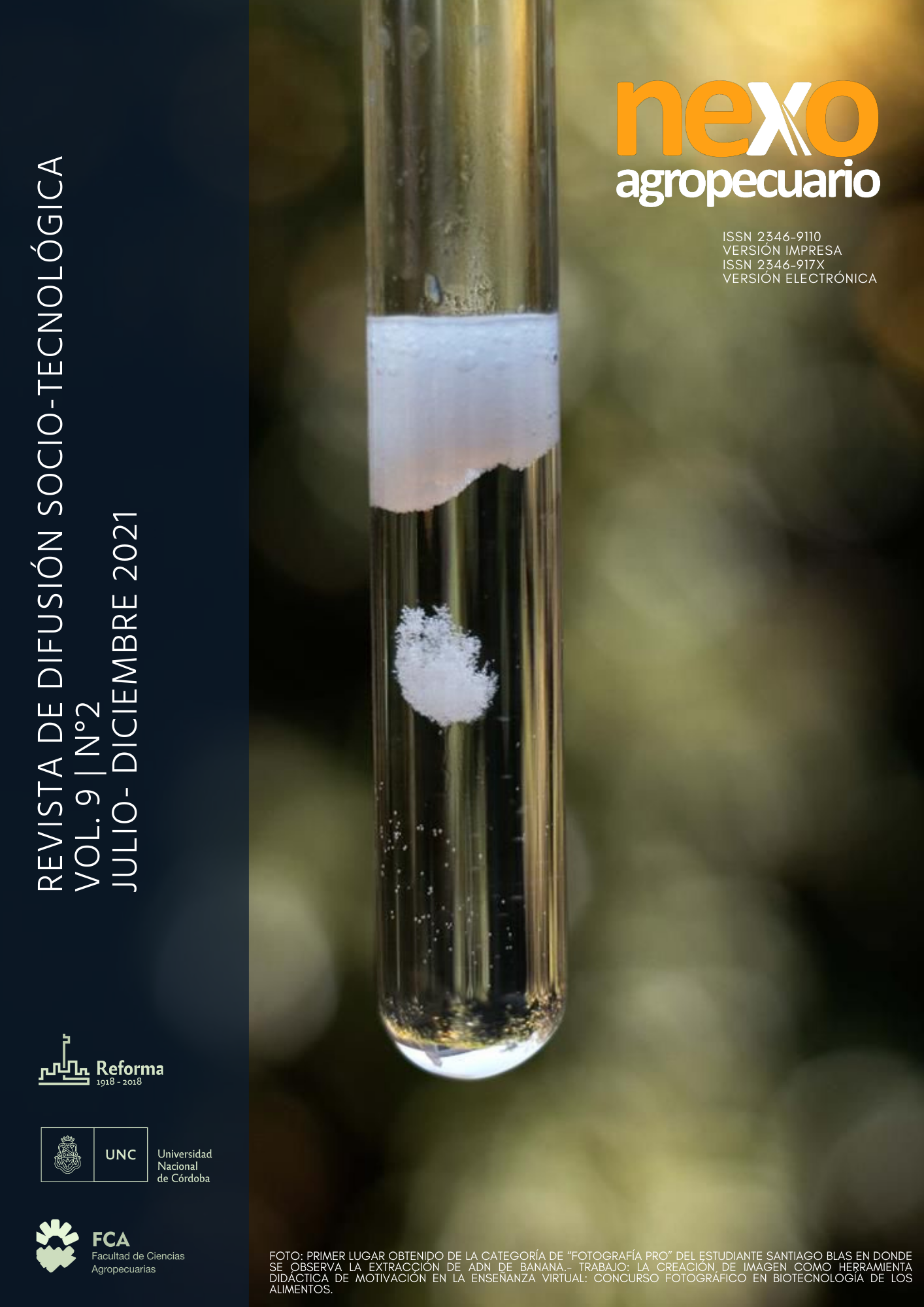Volatility of different 2,4-D formulations using bioindicators.
Keywords:
Herbicides, auxin herbicides, volatilization, drift, off-target movement, sensitive crops, phytotoxicity.Abstract
The different 2,4-D formulations have different physical-chemical characteristics, which can lead to risks for nearby crops or sensitive areas. The movement of gases from the asset out of the target area is one of the unwanted effects that certain formulations can present under predisposing conditions. The present work compared the volatility of 4 2,4-D formulations by using hyper-sensitive plants as bio-indicators. The formulations (ethylhexyl ester, amine salt, choline salt and acid) were applied in trays with sand, at a dose of 4560 g of acid equivalent per hectare (gr. Ea / ha.), Which were then placed next to plants for 24 hours. Both the trays and the bio-indicators were placed in "volatilization tunnels" to force the conditions for the herbicides to pass into the gas phase and thus be able to compare the phytotoxicity generated by the volatility of the different formulations. At 40 days after exposure and using the EWRS scale, the ethyl exyl ester and amine salt formulations were the ones that showed the greatest damage, not differing significantly from each other. The acid was found at a lower level of damage, and the choline salt at an even lower level, without differentiating from the control.Downloads
References
• Frene R. (2020). Enlist sistema de control de malezas: cómo funciona el sistema y que soluciones ofrece a la problemática en argentina. Revista ASACIM, mayo 2020, pág. 52-57.
• Ouse D.G. (2018). A New Approach to Quantify Herbicide Volatility. Weed Technology. https://www.cambridge.org/core/terms.https://doi.org/10.1017/wet.2018.75
• Peterson M.A. (2016). 2,4-D Past, Present, and Future: A Review. Weed Technology 2016 30:303–345
• Sosnoskie L.M. (2015). Evaluating the Volatility of Three Formulations of 2,4-D When Applied in the Field. Weed Technology 2015 29:177–184
• Egan J.F. (2014). A Meta-Analysis on the Effects of 2,4-D and Dicamba Drift on Soybean and Cotton. Weed Science 2014 62:000–000
• Havens P.L. (2012). Updated Report: Field Volatility of Different 2,4-D Forms. Dow AgroSciences LLC, Study ID: 120931.
Downloads
Published
Issue
Section
License

This work is licensed under a Creative Commons Attribution-NonCommercial-ShareAlike 4.0 International License.
Aquellos autores/as que tengan publicaciones con esta revista, aceptan los términos siguientes:- Los autores/as conservarán sus derechos de autor y garantizarán a la revista el derecho de primera publicación de su obra, el cuál estará simultáneamente sujeto a la Licencia de reconocimiento de Creative Commons que permite a terceros compartir la obra siempre que se indique su autor y su primera publicación esta revista.
- Los autores/as podrán adoptar otros acuerdos de licencia no exclusiva de distribución de la versión de la obra publicada (p. ej.: depositarla en un archivo telemático institucional o publicarla en un volumen monográfico) siempre que se indique la publicación inicial en esta revista.
- Se permite y recomienda a los autores/as difundir su obra a través de Internet (p. ej.: en archivos telemáticos institucionales o en su página web) después del proceso de publicación del número de la revista, lo cual puede producir intercambios interesantes y aumentar las citas de la obra publicada. (Véase El efecto del acceso abierto).


